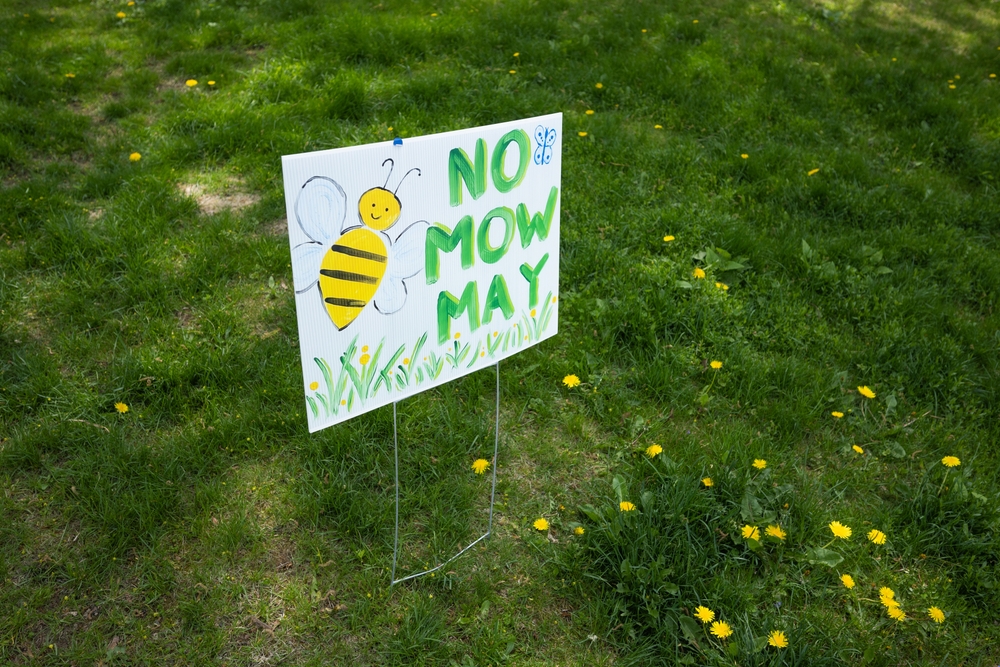“Positive deviants” – innovative individuals who do things differently and succeed against the odds – can help communities solve seemingly intractable problems.
Richard Pascale, Jerry Sternin and Monique Sternin | September 2010 issue

In the Amazon delta of Brazil, cash crops now grow in tidal wetlands previously regarded as unsuitable for agriculture, thanks to Rosario Costa Cabral, a diminutive woman with determined eyes and prominent cheekbones. Her family occupies a small homestead on the banks of the great muddy river. With barely enough dry land to eke out a subsistence living, she sought a way to harness the vast swaths of rich delta soil inundated by twice-daily flooding.
Rosario questioned the orthodoxy that farming and floodplains don’t mix. A close observer of the Amazon’s daily rhythms and seasonal cycles, she noted that in any given year the contours of the river bottom were relatively stable. Higher patches drained quickly when waters receded. Could plants survive if submerged for only a few hours a day?
Her experiments started with cassava, a vigorous, water-tolerant staple of the Amazonian diet. Selecting for mutations within the species that flourished in especially wet places, she planted rootstock in the dry season when the river was low. Seedlings gained a sustainable foothold.
Success emboldened her to experiment with other crops—lemons and chile peppers. Today, the family not only feeds itself but generates an income, and plant biologists and environmentalists recognize Rosario for her pioneering discovery.
Looking at satellite photos taken of the Sahel region of Niger 30 years apart (1975 and 2005), one’s attention is drawn to the anomaly of vast swaths of former desert that turned green. On closer examination, it’s evident that vegetation is densest in the most populated regions. Most remarkable of all, this transformation took place in a fragile ecosystem in which only 12 percent of the land is arable and 90 percent of the 13 million who reside there make their living from agriculture. How, against impossible odds, did the community turn back the tide of sand dunes that had been inundating their huts?
Farmer Ibrahim Donjjimo had realized that the worsening trend was more than a seasonal aberration. The long-prevailing practice of clearing all trees to maximize crop density on scarce land had given rise to a treeless landscape. In the mid-1980s, Ibrahim began setting an example for other farmers in Guidan Bakoye by taking a counterintuitive step. Instead of clearing the saplings that sprouted from the earth each year, he protected them. In particular, he nurtured the indigenous gao and baobab trees, which flourish in harsh conditions.
Turns out he had stumbled on a highly effective, resource-neutral strategy. Fallen leaves add nutrients to the soil. Roots fix nitrogen from the air and help prevent erosion when infrequent, torrential rains batter the brick-hard earth. Because the deciduous trees are bare during the rainy season, their canopy is absent when crops densely planted below their branches most need sun.
Ibrahim’s experiment bore fruit. After several years of observing his improved crop yields and cash flow, a few began to follow suit. Then more. Today, farmers sell branches for firewood, sell or eat the fruit and use the pods for animal fodder. Revenue from 20 trees brings $300 a year in additional income, a significant contribution to average per capita income. As tree-planting spread from one town to another, the region began to evolve a more benign microclimate that mitigates the impact of searing droughts and arid winds.
These two stories are of “positive deviants,” the successful exceptions rather than the failing norms. As a problem-solving process, positive deviance requires retraining ourselves to pay attention differently—awakening minds accustomed to overlooking outliers, and cultivating skepticism about the inevitable “that’s just the way it is.” Once this concept is grasped, attention to observable exceptions draws us naturally to the who, the what and especially the how.
Positive deviance (PD) is an awkward, oxymoronic term, but the concept is simple: Look for outliers who succeed against all odds.
PD is founded on the premise that at least one person in a community, working with the same resources as everyone else, has already licked the problem that confounds others. This individual is an outlier in the statistical sense—an exception, someone whose outcome deviates in a positive way from the norm.
In most cases, this person does not know he or she is doing anything unusual. Yet once the unique solution is discovered and understood, it can be adopted by the wider community and transform many lives. From the PD perspective, individual difference is regarded as a community resource. Community engagement is essential to discovering noteworthy variants and adapting their practices and strategies.
Solutions to seemingly intractable problems already exist; they have been discovered by members of the community itself—and these innovators, or positive deviants, have succeeded even though they share the same constraints and barriers as others.
The 13th-century Sufi mystic Nasrudin is a fixture in Middle Eastern folklore. His parables combine wisdom with irony, logic with the illogical, the superficial with the profound. In one tale, he is a notorious smuggler routinely crossing the frontier with his string of donkeys, saddlebags loaded with straw. Customs inspectors search in vain for the contraband that accounts for his steady accumulation of wealth. Years go by. Nasrudin retires. One day he encounters the former chief of customs in a local tea house.
The retired official broaches a long-suppressed question: “Nasrudin, as we are now old men who have ended our careers and are no longer a threat to each other, tell me, during all those years, what were you smuggling?”
Nasrudin replies: “Donkeys.”
Positive deviants are invisible in plain sight. Living alongside peers, they flourish while others struggle. Also invisible in plain sight is the community’s latent potential to self-organize, tap its wisdom, and address problems long regarded with fatalistic acceptance. Once the community has discovered and leveraged existing solutions by drawing on its own resources, adaptive capacity extends beyond addressing the initial problem at hand. It enables those involved to take control of their destinies and address future challenges.
PD has been used to reduce gang violence in inner city schools in New Jersey and Pennsylvania and to increase the success rate of black entrepreneurs in South Africa; to provide access to markets across conflicted land on behalf of the Afar nomads of Ethiopia and to improve smoking cessation among the 70 percent of inmates hooked on nicotine in the prisons of New South Wales; to reduce corruption in Kenya and to improve the end-of-life experience and quality of death in Connecticut hospitals; to reduce the high dropout rates of minorities in California schools and to curtail sex trafficking of girls in Indonesia.
The positive deviance process is not suitable for everything, of course. It is unnecessary when a technical solution—drought-resistant corn, for example, or a vaccine for smallpox—exists. But the process excels over most alternatives when addressing problems that are enmeshed in a complex social system, require cultural and behavioral change, and entail solutions that are rife with unforeseeable or unintended consequences. It provides a fresh alternative when problems are viewed as intractable. It redirects attention from “what’s wrong” to “what’s right”—observable exceptions that succeed against all odds.
The secret sauce of the PD process is how it engages and transforms the social dynamics that have kept things stuck. The social fabric of each community holds intractable problems in place and must be unfrozen to allow new behaviors and mindsets to evolve. An analogy from behavioral biology makes the point.
In Britain in the late 19th century, certain birds gained notoriety for ingenuity displayed in pilfering cream from milk bottles. Initially, dairymen delivered milk to the doorstep, dispensing it into customers’ jugs. Cream floated to the top. Birds and other creatures gained unobstructed access to a tasty, high-protein dietary supplement. When, in 1894, caps were installed to thwart the raiders, the free lunch came to an abrupt end. Except, that is, for a few species of bird that figured out how to cope with the obstruction.
Pertinent to our story is not that a few clever individuals discovered that a well-placed peck could pierce the cap, but how the discovery was disseminated. The contrast between robins and magpies is instructive. Robins are highly territorial, live comparatively isolated lives and vocalize primarily to demark their territory.
The magpie, by way of contrast, is highly social and leverages its intelligence accordingly. Magpies, with a brain-to-overall-body-weight ratio only slightly lower than that of humans, exhibit unusual levels of social awareness. Rivaling chimpanzees, they can (along with humans, dolphins, elephants and great apes) recognize their image in a mirror. Concept of self is common to advanced social systems.
Magpies are gregarious in winter, gather to roost at night and collect in rooks as large as 65,000 birds during mating season. They team up in bands to tease cats and dive-bomb predators. Demonstrating empathy and social altruism, cooperative breeding occurs from time to time, with additional adults helping to raise nestlings. Young magpies even play elaborate social games, including king of the mountain, passing sticks and sliding down smooth surfaces. They can work collectively to lift garbage bin lids as members take turns feeding. It was observed that one flock figured out how to crack nuts by placing them in crosswalks, letting passing cars break the husks, and waiting for the red light before safely retrieving the contents.
Unsurprisingly, the magpie’s social intelligence disseminated bottle cap piercing techniques to millions of birds throughout Britain within a few years. The robin, on the other hand, was destined to compartmentalized success. Cap piercings by isolated individuals were not coupled with social diffusion. The occasional robin might pick up the technique from its mate. Juveniles might observe the method from a parent if the nest was within sight of a milk bottle. But absence of an evolved social network deprived the species as a whole.
Isolated positive deviants coexist in such communities. A few may discover successful strategies to cope with difficult problems. But in the absence of a social process to disseminate innovation and incorporate it into the group repertoire, discovery bears few progeny.
From the vantage point of the PD approach, the community must decide it has a problem serious enough to warrant collective attention, opt in to the activity of addressing it, enroll individual members to invest time and energy in the work of discovering the PDs and, later, disseminate discoveries through practice. These acts themselves transform the social system and behavioral change and learning take place.
PD works like nature works. Mutations in nature don’t reinvent the whole genome of a species. Nature tinkers with a differently shaped bird beak or slightly larger brain size that facilitates social intelligence. Natural selection does the rest, favoring variations that improve access to food and reproduction. Of course, in nature, this all plays out in evolutionary time scales of centuries or millennia. Employing identical principles, the PD process achieves this change within months or a few years.
A process such as positive deviance is often brushed aside as too slow, too problematic, unnecessarily indirect and complex. People are assumed to be rational, and their social systems adaptable, and it is sufficient to give them the answer and expect them to get on with it. Involving the community in a process of self-discovery? Letting people decide to opt in or opt out? Using practice (rather than knowledge or information) to disseminate new opportunities? These premises are widely discounted as “inefficient.”
Perhaps they are—but they are unbelievably effective.
This is an edited excerpt from The Power of Positive Deviance: How Unlikely Innovators Solve the World’s Toughest Problems, published by Harvard Business Press. © 2010 Richard Pascale, Jerry Sternin and Monique Sternin











